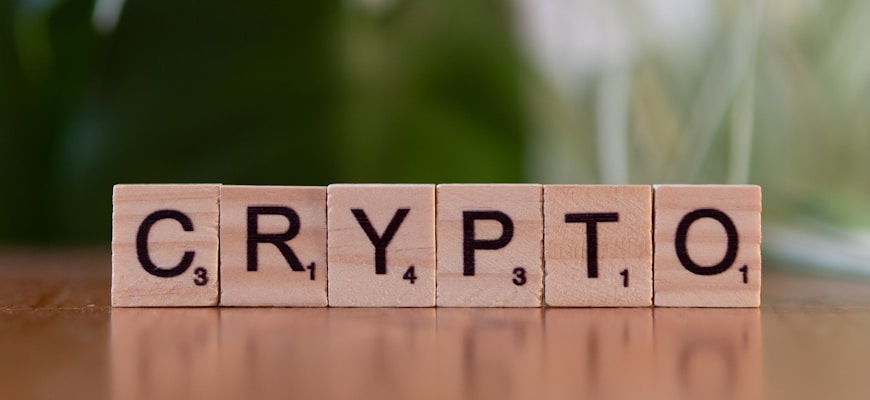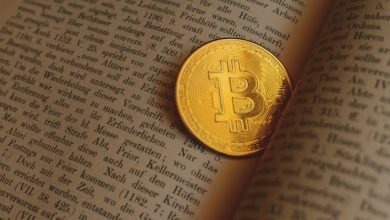Crypto and IoT: Building a Decentralized Connected World

- Understanding the intersection of cryptocurrency and the Internet of Things
- Exploring the potential of blockchain technology in IoT applications
- Challenges and opportunities in creating a decentralized connected world
- The role of smart contracts in enhancing IoT security and efficiency
- Innovative ways in which crypto can revolutionize the IoT landscape
- Building a future where devices communicate autonomously through blockchain technology
Understanding the intersection of cryptocurrency and the Internet of Things
Understanding the intersection of cryptocurrency and the Internet of Things (IoT) is crucial in today’s rapidly evolving technological landscape. The combination of these two cutting-edge technologies has the potential to revolutionize how devices communicate and transact with each other in a decentralized manner.
Cryptocurrency, such as Bitcoin and Ethereum, provides a secure and efficient means of transferring value between connected devices. This can enable seamless micropayments between IoT devices, allowing them to autonomously buy and sell services or data without human intervention.
Furthermore, the use of blockchain technology in IoT devices can enhance security and trust by creating a tamper-proof record of device interactions. This can help prevent unauthorized access or tampering with sensitive data, ensuring the integrity of IoT networks.
By leveraging the power of cryptocurrency and IoT, businesses can create new revenue streams, improve operational efficiency, and enhance user experiences. For example, smart homes equipped with IoT devices can use cryptocurrency to pay for energy usage or securely share data with other connected devices.
In conclusion, the convergence of cryptocurrency and the Internet of Things is reshaping the way devices interact and transact in the digital age. By understanding the potential of these technologies and their combined benefits, businesses can unlock new opportunities and create a decentralized connected world that is more secure, efficient, and innovative.
Exploring the potential of blockchain technology in IoT applications
Blockchain technology has the potential to revolutionize IoT applications by providing a secure and decentralized platform for devices to communicate and transact with each other autonomously. By leveraging blockchain’s immutable ledger and smart contract capabilities, IoT devices can securely exchange data and value without the need for a central authority. This can streamline processes, reduce costs, and enhance security in various IoT use cases.
One of the key advantages of using blockchain in IoT applications is its ability to ensure data integrity and authenticity. By recording all transactions on a distributed ledger that is transparent and tamper-proof, blockchain can prevent unauthorized access, manipulation, or deletion of data. This is critical in IoT scenarios where sensitive information is being shared between devices, such as in healthcare, supply chain management, or smart homes.
Moreover, blockchain can enable new business models and revenue streams in the IoT space. Through the use of smart contracts, IoT devices can automatically execute transactions based on predefined conditions, such as when certain data thresholds are met or when a payment is due. This can enable a wide range of new services, such as pay-per-use models, automated maintenance, or peer-to-peer energy trading.
In addition, blockchain can enhance the security and privacy of IoT devices by providing a decentralized identity management system. Each device can have its unique digital identity stored on the blockchain, which can be used to authenticate and authorize transactions without the need for a centralized authentication server. This can reduce the risk of identity theft, unauthorized access, and data breaches in IoT ecosystems.
Overall, the combination of blockchain technology and IoT has the potential to create a more connected, efficient, and secure world. By leveraging blockchain’s decentralized architecture, immutability, and smart contract capabilities, IoT applications can unlock new levels of innovation and value creation. As the technology continues to evolve, we can expect to see a wide range of exciting use cases and applications emerge in the intersection of crypto and IoT.
Challenges and opportunities in creating a decentralized connected world
As we look towards the future of technology, the intersection of crypto and IoT presents both challenges and opportunities in creating a decentralized connected world. This fusion of technologies has the potential to revolutionize how devices communicate and interact with each other, leading to increased efficiency and security in various industries.
One of the main challenges in building a decentralized connected world is ensuring the interoperability of different devices and systems. As more devices become connected through IoT networks, it becomes crucial to establish common standards that allow seamless communication between them. This interoperability can be achieved through the use of blockchain technology, which provides a secure and transparent way for devices to exchange data and transactions.
Another challenge is the issue of scalability, as the number of connected devices continues to grow exponentially. In order to support this massive network of devices, it is essential to develop scalable solutions that can handle the increased volume of transactions and data. Blockchain technology offers a promising solution to this challenge, as it enables the creation of decentralized networks that can scale to meet the demands of a connected world.
Despite these challenges, the fusion of crypto and IoT also presents numerous opportunities for innovation and growth. By leveraging blockchain technology, companies can create new business models and revenue streams through the tokenization of assets and the creation of decentralized applications. This shift towards decentralization also offers increased security and privacy for users, as data is stored and transmitted in a secure and immutable manner.
In conclusion, the integration of crypto and IoT has the potential to transform the way we interact with technology and each other. By addressing the challenges and seizing the opportunities presented by a decentralized connected world, we can pave the way for a more efficient, secure, and interconnected future.
The role of smart contracts in enhancing IoT security and efficiency
Smart contracts play a crucial role in enhancing the security and efficiency of IoT devices. By utilizing blockchain technology, smart contracts provide a decentralized and tamper-proof way to automate and enforce agreements between parties. This not only eliminates the need for intermediaries but also reduces the risk of security breaches and fraud.
One of the key benefits of using smart contracts in IoT is their ability to establish trust among devices without the need for human intervention. This can greatly improve the overall security of IoT networks by ensuring that only authorized devices can interact with each other. Additionally, smart contracts can help streamline processes and reduce costs by automating tasks such as device authentication, data validation, and payments.
Furthermore, smart contracts can enhance the efficiency of IoT devices by enabling real-time communication and data exchange. This can lead to faster decision-making, improved performance, and better overall user experience. By leveraging the power of smart contracts, IoT devices can operate more autonomously and securely, ultimately creating a more connected and decentralized world.
Innovative ways in which crypto can revolutionize the IoT landscape
There are various innovative ways in which cryptocurrency can significantly transform the landscape of the Internet of Things (IoT). By leveraging blockchain technology, crypto can revolutionize the way devices communicate and interact with each other in a decentralized manner.
- Secure Machine-to-Machine Transactions: Crypto can enable secure and seamless machine-to-machine transactions by utilizing smart contracts. These self-executing contracts can automate processes and ensure trust between devices without the need for intermediaries.
- Data Integrity and Privacy: Cryptocurrency can enhance data integrity and privacy in IoT networks by providing end-to-end encryption and decentralization. This ensures that sensitive information transmitted between devices remains secure and tamper-proof.
- Tokenized IoT Ecosystems: Crypto tokens can be used to incentivize device participation and data sharing within IoT ecosystems. This tokenization model promotes collaboration and rewards users for contributing to the network, ultimately fostering a more connected and efficient environment.
- Decentralized Identity Management: Blockchain-based crypto solutions can offer decentralized identity management for IoT devices, allowing for secure authentication and authorization protocols. This eliminates the risks associated with centralized identity systems and enhances overall network security.
- Interoperability and Standardization: Cryptocurrency can facilitate interoperability and standardization among diverse IoT devices and platforms by providing a common framework for communication and data exchange. This seamless integration enables devices to work together harmoniously, regardless of their manufacturer or operating system.
Overall, the integration of cryptocurrency into the IoT landscape holds immense potential to create a more efficient, secure, and interconnected world where devices can communicate and transact autonomously. By harnessing the power of blockchain technology, crypto is poised to revolutionize the way we perceive and interact with the Internet of Things.
Building a future where devices communicate autonomously through blockchain technology
Imagine a future where devices can communicate with each other autonomously, without the need for human intervention. This is the potential that blockchain technology brings to the Internet of Things (IoT). By leveraging the security and transparency of blockchain, devices can securely exchange data and transactions in a decentralized manner.
Blockchain technology allows IoT devices to form a network where they can interact and transact with each other directly. This eliminates the need for intermediaries and central servers, making the communication process more efficient and secure. With blockchain, devices can establish trust and verify the authenticity of data without relying on a third party.
By building a decentralized connected world through blockchain and IoT, we can create a more efficient and transparent ecosystem where devices can autonomously communicate and collaborate. This paves the way for new applications and services that can revolutionize industries and improve our daily lives.



